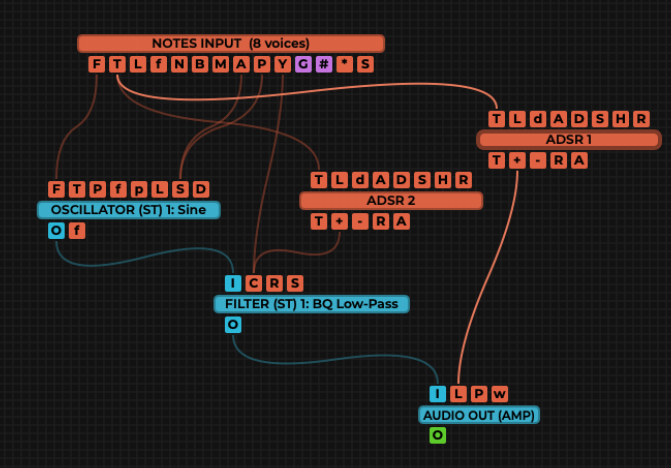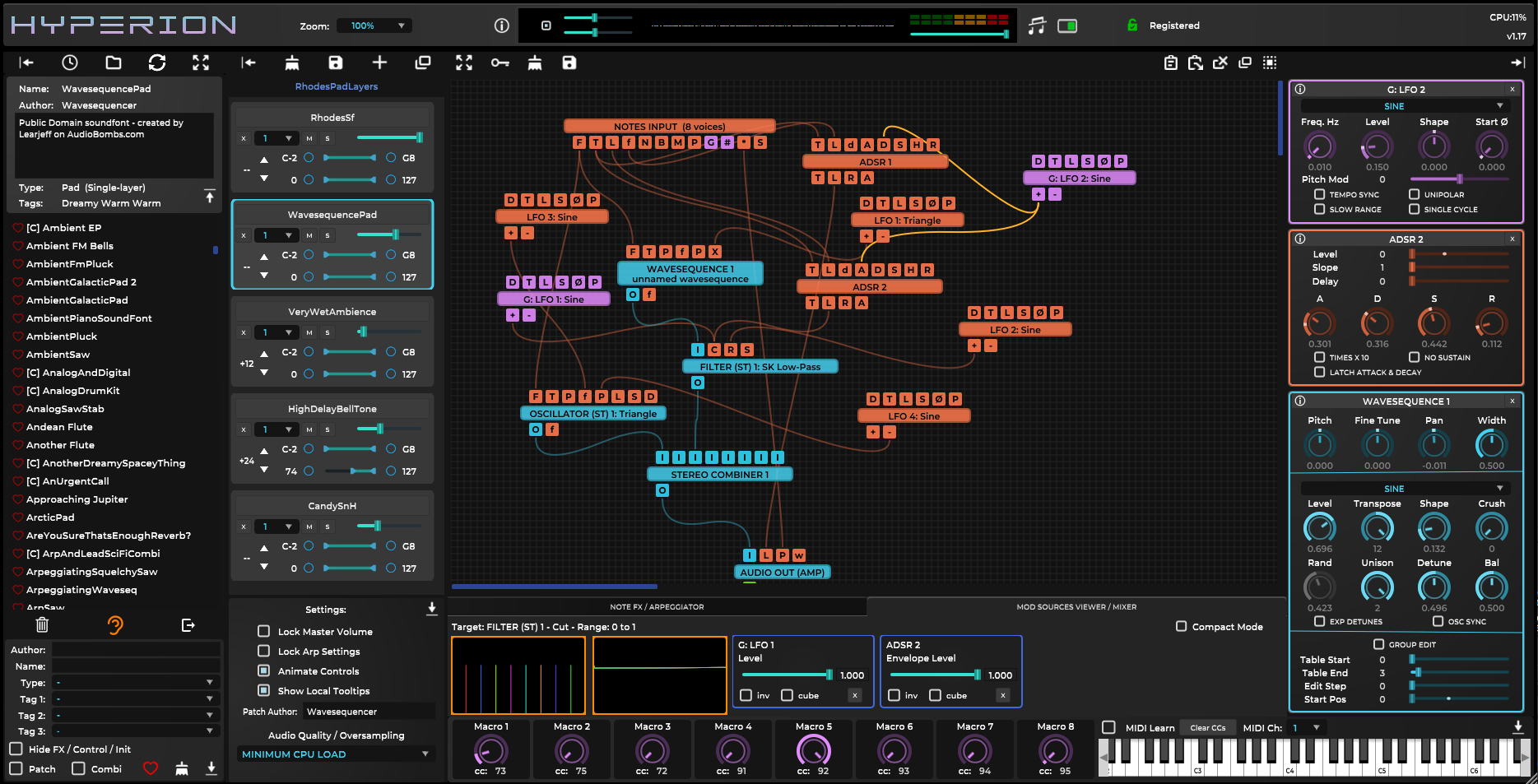v1.27 is the most recent major feature update - MPE Support:
Demo: https://youtu.be/tjeycG23MPo
MPE support is available with individual settings for each layer - so you can set each layer to have different bend ranges, bend rate, bend release modes as well as per layer voice count with the usual voice stealing options. Another new feature is the ability to set the bend range independently for up/down. Full details in the release notes provided with the installer. There will be a video covering these features on the Hyperion Youtube channel soon.
Pitch bend now features individual up and down range settings, a bend smoothing rate, and a bend note release mode option.
The MPE node now includes two extra output pins - A for polyphonic after-touch, and Y for MPE Y-axis MIDI cc data. MPE mode pressure data will output at the channel pressure pin P - which in MPE mode becomes polyphonic (as is the pitch bend and Y axis data) because each note is received with an associated MIDI channel.
When the ‘avg pressure’ (average pressure) option is selected the MPE pressure is averaged from the data of all channels - in some cases this is useful, yet still allows for polyphonic bend and Y axis data.
Full details on MPE parameters and pins are in the updated user guide, and the Notes Input node info text available within the UI.
v1.26 was released on 19th April 2022:
Fixes a couple of issues including a rare but potential crash related to cable deletion handling. Additional audio engine status display which blocks the UI if your audio device is not running (Hyperion cannot work including patching/patch loading unless audio is running). More space for typing out multi-line 2 input node math expressions, additional (optional) mode to save entire state snapshots of Hyperion on node deletion/duplicate operations - may be useful for some - but does slow the experience slightly, so off by default (snapshots are made on patch/combi load or layer deletion by default - principally to save you from accidental layer deletion so that you can recover and then properly save a worked on patch/combi).


















